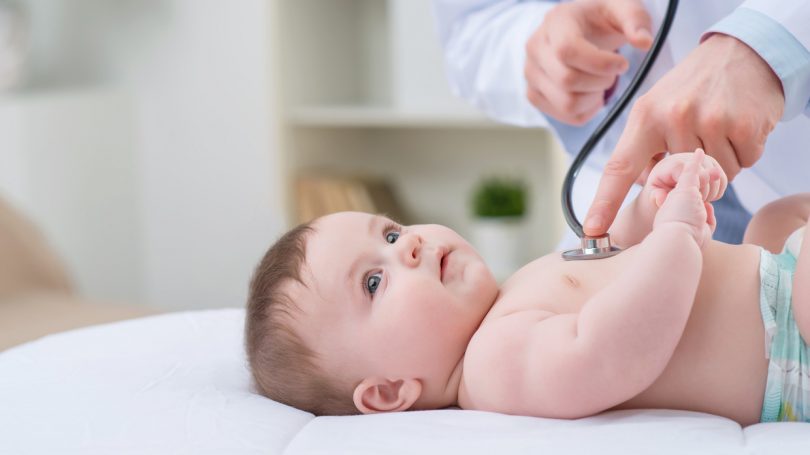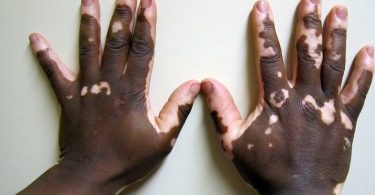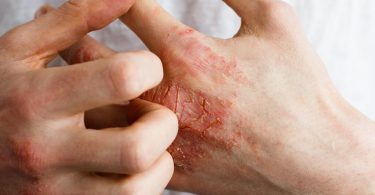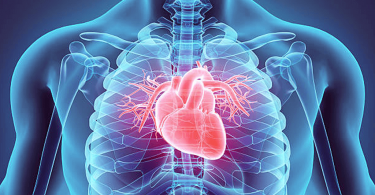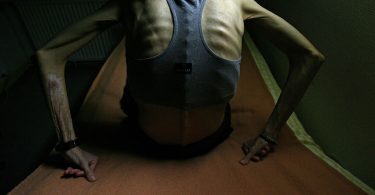In this article we will talk about : Bronchiolitis causes, symptoms and treatment.
Contents
Bronchiolitis definition
Bronchiolitis is an acute viral infectious disease of the bronchioles (small bronchi) caused by the human respiratory syncytial virus or by adenovirus, para-influenzae, influenza and rhinovirus viruses.
The reduction in the caliber of the bronchioles leads to respiratory discomfort which is manifested by a wheezing when breathing in or out.
Young children mainly affected
This disorder affects mainly infants (under two years of age), particularly those living in cities, placed in daily community life or whose parents smoke in the surrounding environment.
The bronchiolitis also, is very contagious and is usually transmitted between October and April.
There are recurrent bronchiolitis. However, when the child develops more than three in a year, the question of allergic asthma must be asked.
Complications to watch closely
After the treatment of symptoms, it is necessary to monitor and manage the child medically.
There are complications of bronchiolitis:
- superinfection of the airways by bacteria;
- the dehydration;
- respiratory distress with asphyxiation.
Bronchiolitis causes
The human respiratory syncytial virus (RSV) causes most often the bronchiolitis. However, adenovirus, para-influenzae, influenza and rhinoviruses may also be involved.
The transmission of this infection is through the secretions expelled during coughing and sneezing. As well as that infected hands or objects can spread it easly.
The bronchiolitis evolves often by epidemics.
Some children are more at risk of developing the disease than others: those with cardiac or pulmonary pathologies, premature babies, etc.
Bronchiolitis symptoms
A few days after transmission, the symptoms of bronchiolitis appear:
- rapid and wheezing;
- a noisy expiration;
- sneezing;
- a cough;
- significant discharge from the nose with nasal obstruction;
- difficulty sleeping;
- discomfort with drinking and eating;
- a precipitated heart rate;
- moderate fever;
- sometimes dehydration, due to a lack of food and associated vomiting.
Restlessness and / or behavioral problems should cause concern.
In the most severe cases, the child may be in respiratory distress: he lacks oxygen and turns blue under the effect of cyanosis.
Any sign of bronchiolitis requires urgent medical consultation for appropriate management.
Bronchiolitis prevention councils
It is useful to follow a few recommendations to prevent the onset of bronchiolitis:
- wash your hands systematically with soap and water for at least thirty seconds before taking care of a baby;
- customize the teats / teaspoons to avoid transmissions of viruses within the same family;
- avoid kissing young children on or near the mouth;
- avoid or limit urban or domestic pollution (cigarette smoke, pollen, dust, etc.);
- ventilate a baby’s room every day;
- avoid taking the infant to promiscuous places (nurseries, metros, supermarkets, etc.);
- avoid putting the child in the presence of infected persons.
Knowing that bronchiolitis viruses live for up to six hours on objects such as toys, doorknobs, etc., these simple actions are essential to limit the risk of transmission.
If parents or caregivers of a young child have a cold, they should wear a mask before looking after them.
Prevent recurrence of bronchiolitis
Bronchiolitis recurrences in general, can be prevented by administering an antibody to RSV.
spacialist reserve this treatment for certain cases (children born premature and have an age less than 6 months at the start of the epidemic). However, its effectiveness is considered moderate.
Bronchiolitis exams
It is necessary to consult a doctor in order to benefit from appropriate management when the first symptoms of bronchiolitis appear.
Bronchiolitis treatment
The treatment of bronchiolitis is based on:
- respiratory physiotherapy, to clear the airways;
- nose washes with physiological saline or seawater;
- good hydration and a sufficient and fractional diet (in several times);
- treatment of fever with paracetamol;
- humidification of the atmosphere in the child’s room using humidifiers;
- sometimes the use of corticosteroids and aerosols from bronchodilators;
- antibiotic treatment, when there is a secondary infection;
- hospitalization, during a severe bronchiolitis with oxygenation, feeding by tube, ventilation. This treatment is compulsory in certain cases: infants under three months old, premature children, during underlying pathology, during respiratory distress, etc.
If we treat it well, bronchiolitis generally don’t last long period (less than ten days) and without sequelae. unlike the residual cough that can persist for a fortnight.
Read also: Panic attack: causes, symptoms and treatment

